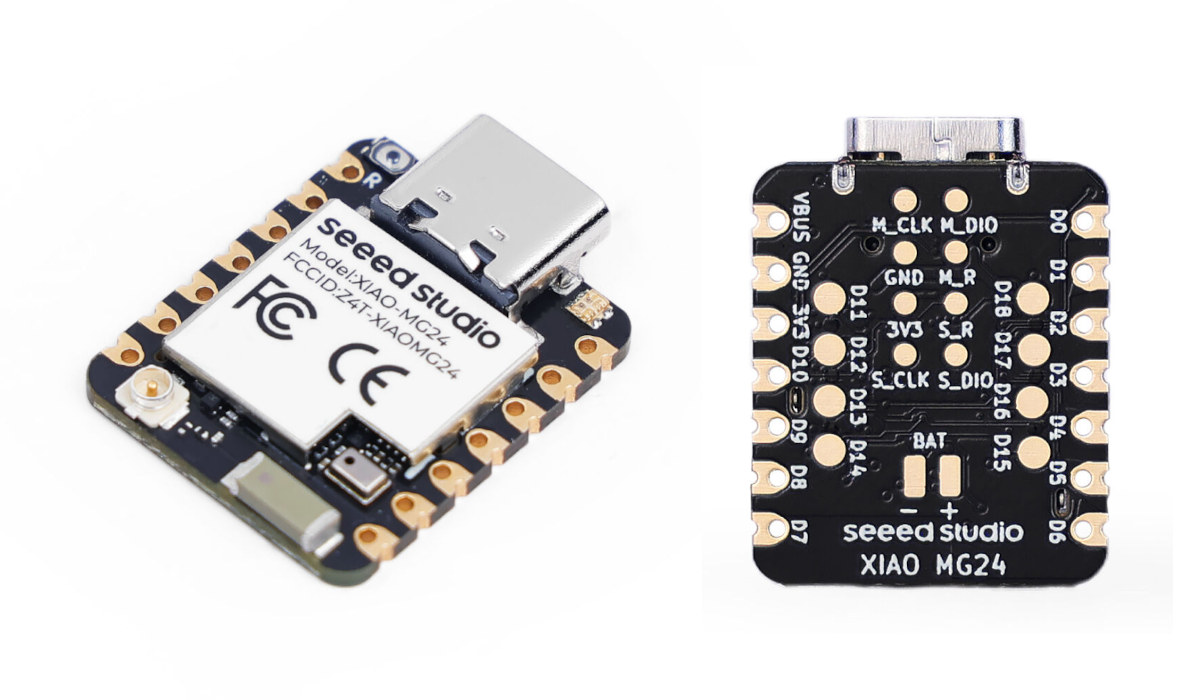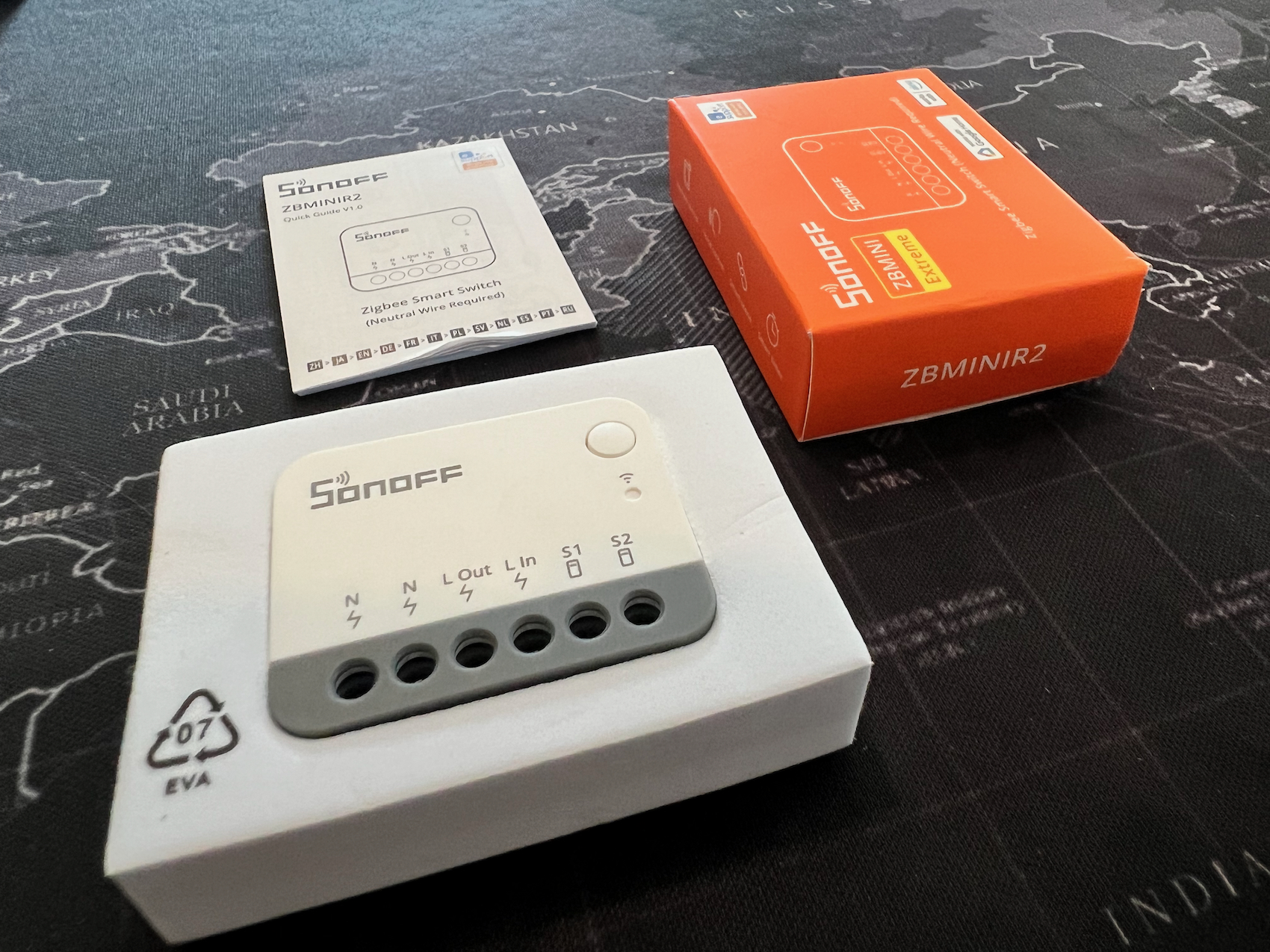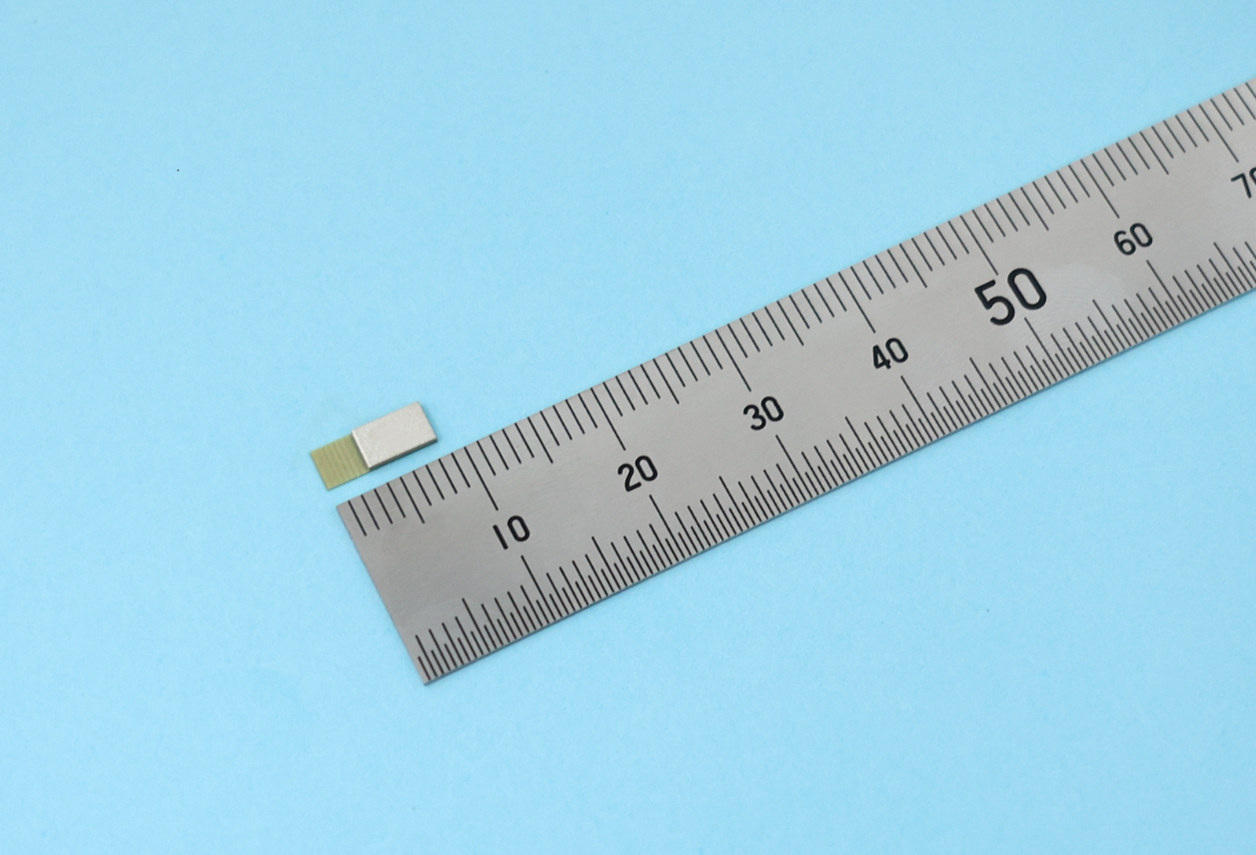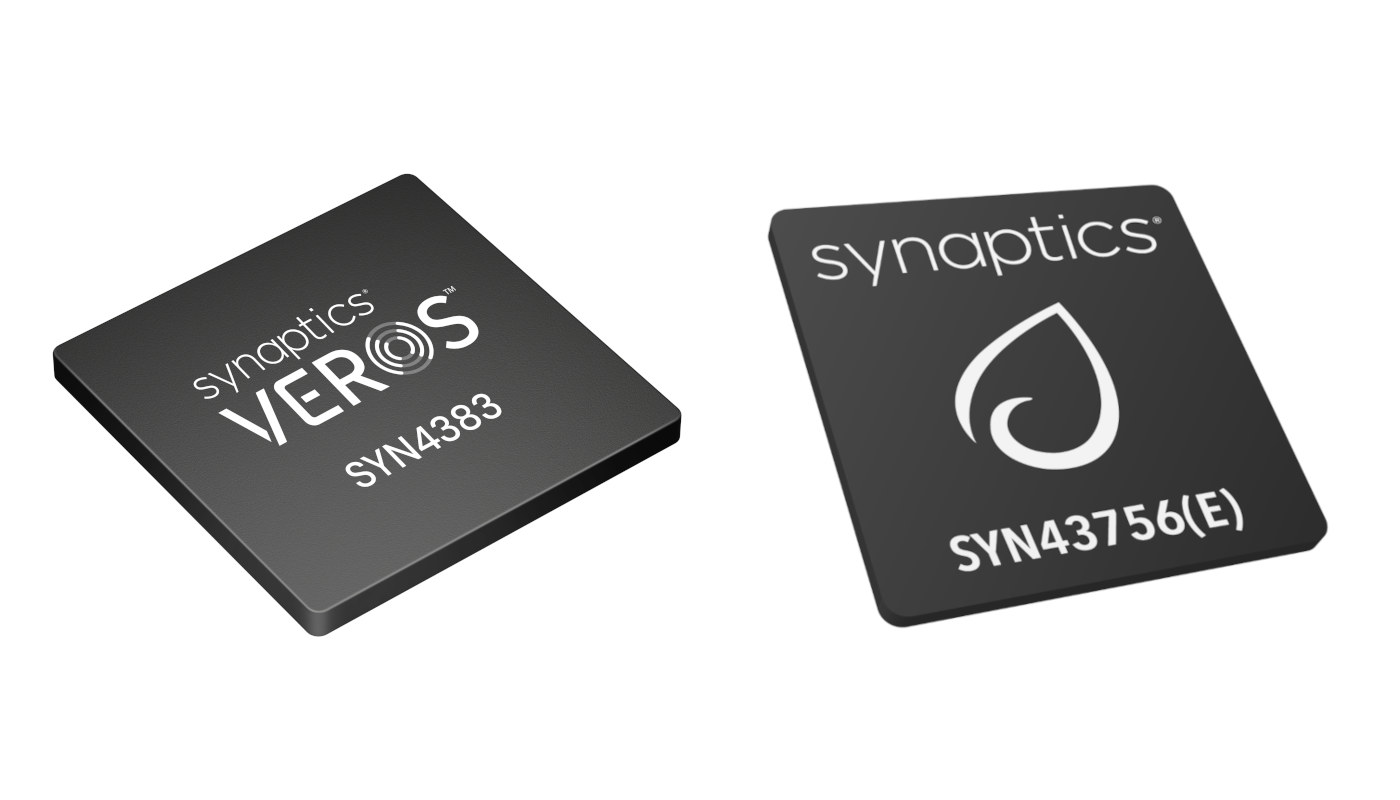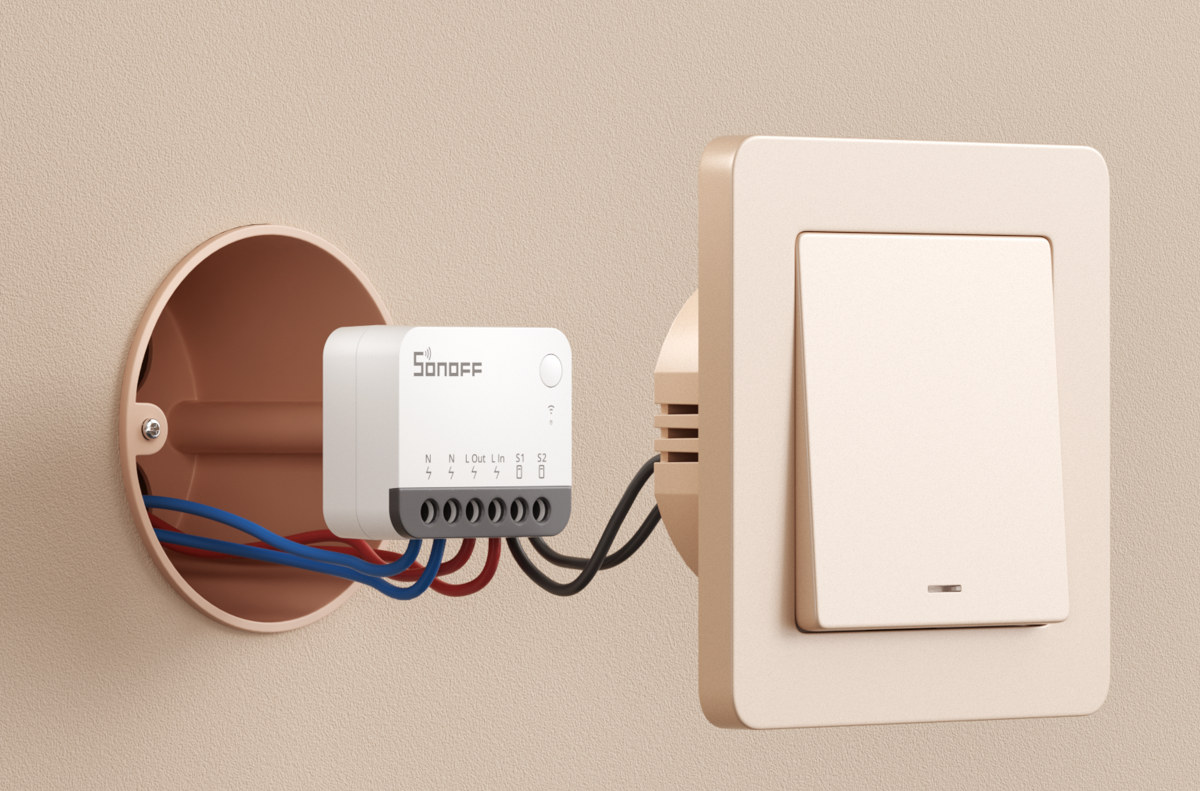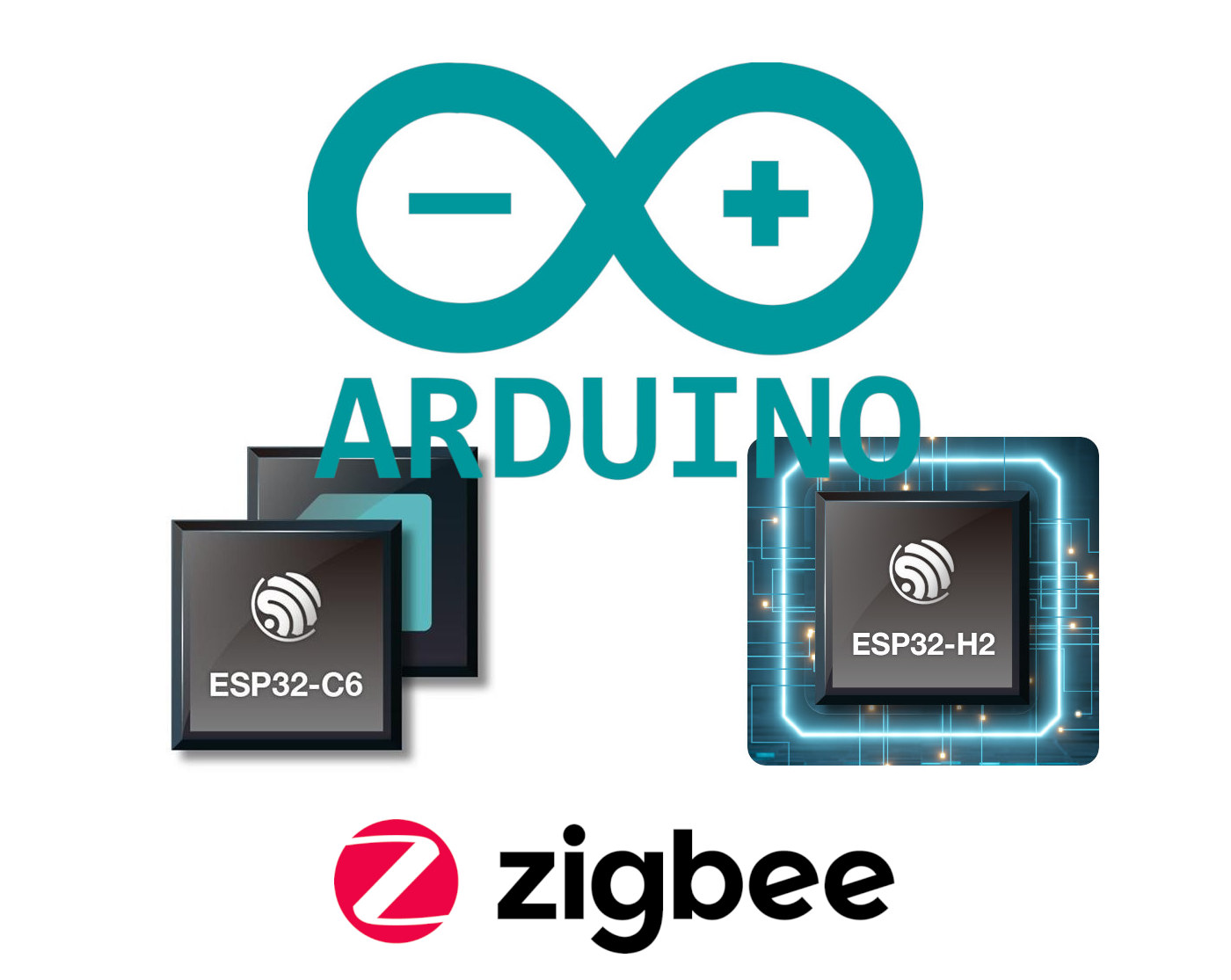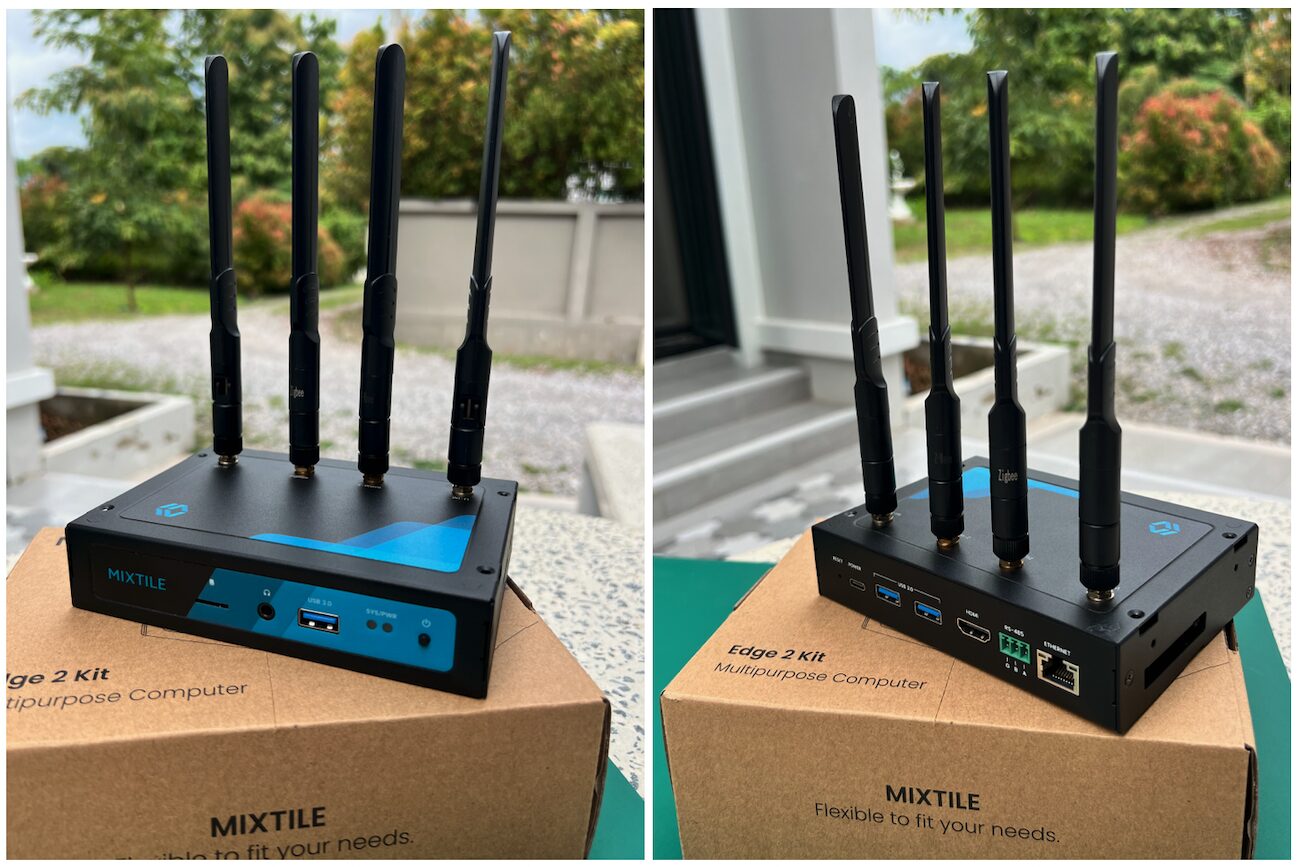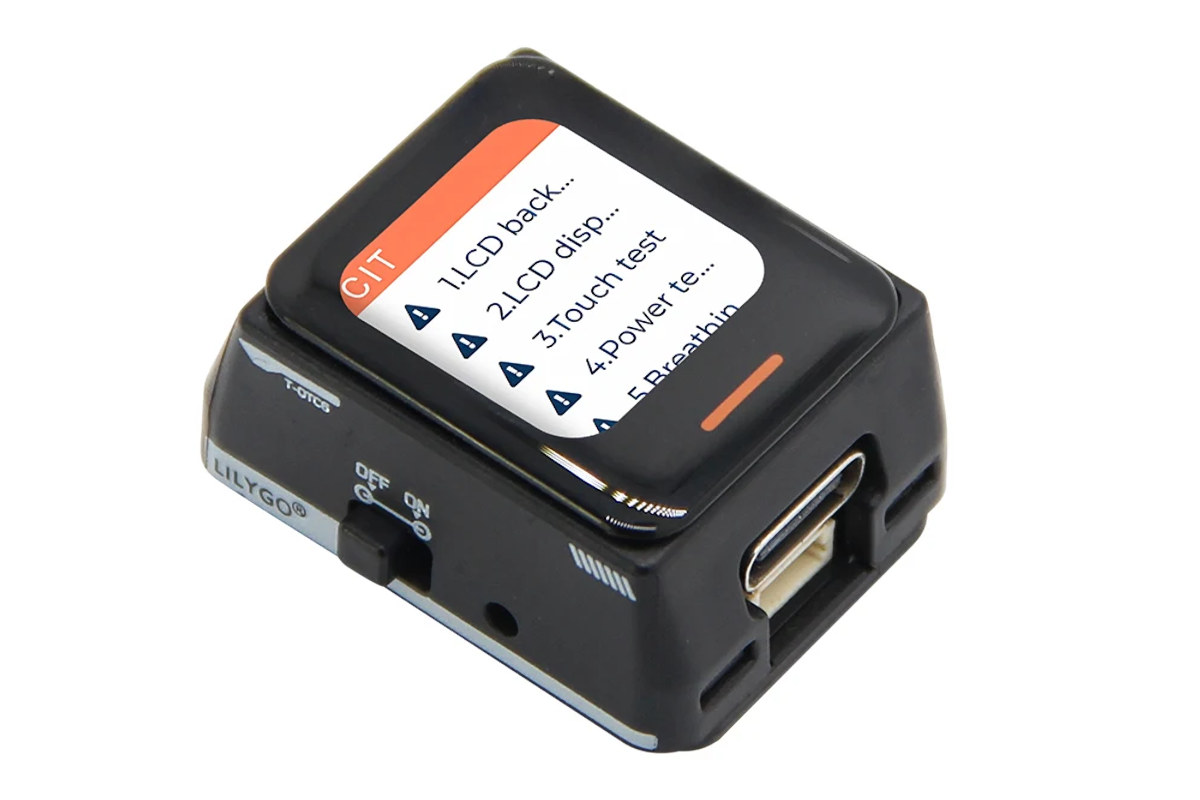Seeed Studio has added two members to its XIAO family of tiny MCU boards with the XIAO MG24 and XIAO MG24 Sense boards based on Silicon Labs EFR32MG24 multi-protocol wireless SoC and designed for battery-powered Matter over Thread and Bluetooth LE 5.3 applications. Both 21×17.8 mm USB-C boards feature a 78MHz Silabs MG24 Cortex-M33 microcontroller with 256kB SRAM and 1536KB flash, an additional 4MB SPI flash on-board, and 22 pins and pads for GPIO pins, analog inputs, and power signals, plus a reset button and two LEDs. The “Sense” model adds an analog microphone and a 6-axis IMU sensor. XIAO MG24/MG24 Sense specifications: SoC – Silicon Labs EFR32MG24 (EFR32MG24B220F1536IM48-B) MCU cores Arm Cortex-M33 @ 78.0 MHz with DSP instruction and floating-point unit for user application Arm Cortex-M0+ core for wireless Memory – 256 KB RAM Storage – 1536 KB flash Wireless protocols – Matter, OpenThread, Zigbee, Bluetooth Low Energy 5.3, […]
SONOFF ZBMINIR2 review – A mini Zigbee switch & Zigbee router tested with eWeLink and Home Assistant
We have received another Zigbee device from SONOFF for review, namely the ZBMINIR2 which we’ll review with both eWelink adn Home Assistant. Many people may be familiar with the first-generation mini Zigbee Switch that SONOFF released in 2020, known as the ZBMINI. ZBMINI was one of the early Zigbee Switch models, which also acted as a Zigbee Router. The ZBMINIR2 is SONOFF’s second-generation mini Zigbee Switch including both software and hardware upgrades compared to its predecessor. Improvements include a smaller size, better signal quality, an increase in the number of supported devices (2x), wider coverage (5x), and additional features. Let’s dive into the details. Unboxing ZBMINIR2 Zigbee switch Inside the box, you’ll find a small user manual and the ZBMINIR2 device as usual. It is notably smaller than the predecessor model, which makes installation much easier in many cases. For example, it can now fit into the wall box behind […]
KAGA FEI ES4L15BA1 is an ultra-small Bluetooth LE 6.0 and 802.15.4 module based on Nordic nRF54L15 SoC
Japanese company KAGA FEI has recently unveiled the incredibly small ES5L15BA1 Bluetooth LE 6.0 and 802.15.4 module based on Nordic Semi nRF54L15 ultra-low-power Cortex-M33 wireless MCU. We had previously covered the u-Blox NORA-B2 which I already found pretty small at 14.3 x 10.4 x 1.9mm, but the ES5L15BA1 module goes a step further measuring just 8.55 x 3.25 x 1.00 mm with an integrated antenna which could make it the world’s smallest Bluetooth LE module. KAGA FEI ES4L15BA1 specifications: SoC – Nordic Semiconductor nRF54L15 MCU cores Arm Cortex-M33 with Arm TrustZone @ 128MHz RISC-V coprocessor for software-defined peripheral Memory – 256KB SRAM Storage – 1.5MB non-volatile memory Wireless Bluetooth 6.0 Data rates – 2Mbps, 1Mbps, 500kbps, 125kbps Features AoA / AoD Channel Sounding 802.15.4 radio for Thread / Zigbee / Matter Nordic Proprietary 2.4 GHz protocol up to 4 Mbps Frequency – 2402 to 2480 MHz +8dBm output power Antenna […]
Synaptics Veros SYN4383 and SYN43756(E) SoCs support tri-band WiFi 6E, Bluetooth 5.3/5.4, and 802.15.4 connectivity
Synaptic has unveiled the SYN4383 and SYN43756(E) high-performance “Veros” SoCs with tri-band Wi-Fi 6E, Bluetooth 5.3/5.4, and an optional 802.15.4 radio. The SYN4383 is an upgrade to SYN4382 SoC that supports 1,200 Mbps 2×2 MIMO Wi-Fi 6E, Bluetooth 5.4, and 802.15.4 for Zigbee and Thread support. It supports real simultaneous dual-band (RSDB) operation and offers “greater system integration”. The SYN43756(E) is similar but lacks an 802.15.4 radio and RSDB support. SYN4383 “Triple Combo 3” Wi-Fi 6E, Bluetooth 5.4, 802.15.4 SoC Synaptics Veros SYN4383 key features: Tri-band 2×2 MIMO Wi-Fi 6E (802.11ax) up to 1200 Mbps throughput, RSDB with 2.4 GHz radio and either 5 or 6 GHz radio, and support for legacy 802.11a/b/g/n/ac WiFi Bluetooth 5.4 (Bluetooth 6.0 compatible) with LE Audio, Channel Sounding for accurate positioning 802.15.4 radio for Thread and Zigbee Application-layer support for Matter-compliant security and interoperability Smart Co-Ex for WiFi/Bluetooth coexistence in the 2.4 GHz band […]
SONOFF ZBMINIR2 tiny Zigbee 3.0 switch also works as a Zigbee router with up to 64 sub-devices
SONOFF ZBMINIR2 is a tiny Zigbee smart switch that looks very similar to the SONOFF Zigbee Extreme (ZBMINIL2) but requires a neutral wire and can act as a Zigbee router with up to 64 sub-devices. It also supports new features such as “Turbo mode” for extended range and “detach relay” mode where the states of external switches and relay are separated, so operating the external switch button won’t affect the relay state. The tiny wireless switch can fit into the smallest EU-type/86-type/120-type mounting boxes and works with gateways supporting the Zigbee 3.0 protocol such as ZBBridge Pro, NSPanel Pro, and other compatible Zigbee 3.0 hubs. It also supports external switches (momentary, door, SPDT, and rocker), voice control through Amazon Alexa and Google Home, and like other SONOFF devices is designed to be controlled through the eWelink mobile app by default. SONOFF ZBMINIR2 specifications: MCU – Unspecified – Potentially the same […]
Arduino Core for ESP32 gets a Zigbee wrapper library
Some of the newer Espressif Systems wireless SoCs such as the ESP32-H2 and ESP32-C6 support Zigbee through their built-in 802.15.4 radio. It’s been working since the release of the ESP-IDF 5.1 framework along with the ESP-Zigbee-SDK for a while, but Arduino support was less straightforward. But this is about to change as an Espressif engineer nicknamed P-R-O-C-H-Y has recently added a Zigbee wrapper library for the ESP-Zigbee-SDK to Arduino Core for ESP32 that works with ESP32-C6 and ESP32-H2 as standalone nodes and other SoC can be used as radio co-processor attached to an RPC (802.15.4 radio layer). The wrapper library currently supports the following: Zigbee classes and all Zigbee roles Zigbee network scanning Allow multiple endpoints on the same Zigbee device (not tested yet) Supported Home Assistant devices On/off light + switch Color Dimmable light + switch Setting Manufacturer and model name Other tasks currently planned include supporting “Temperature sensor […]
Mixtile Edge 2 Kit review with Home Assistant, 2-in-1 Zigbee & Z-Wave mPCIe module
We received the Edge 2 Kit IoT gateway on the Rockchip RK3568-powered Edge2 single board computer (SBC) and a 2-in-1 Zigbee and Z-Wave mPCIe card from Mixtile which we will be reviewing from the perspective of smart home applications using Home Assistant open-source home automation framework. Let’s dive into the details. Unboxing Mixtile Edge 2 Kit CNX Software previously reported on the Mixtile Edge 2 Kit in 2022 and you can check the detailed specifications and block diagram in that earlier article. Since then, Mixtile has found a wider range of applications for the device and is also promoting it as an Edge AI Box that performs AI object detection using the Edge 2 Kit (or the more powerful Mixtile Blade 3) using the built-in NPU (Neural Processing Unit) with up to 1 TOPS of AI performance for tasks such as object detection. Let’s unbox it and take a closer […]
LILYGO T-QTC6 – An ESP32-C6 IoT controller with a 0.85-inch touchscreen LCD
LILYGO T-QTC6 is a cute little IoT controller based on an ESP32-C6 WiFi 6, Bluetooth 5.4 LE, and 802.15.4 wireless microcontroller and a 0.85-inch touchscreen color LCD that can be powered via USB-C or a LiPo battery with the board also supporting charging. The device, sometimes called “T-QT C6” (with a space), also comes with an 8-pin female connector with five GPIOs and a Qwiic connector for UART modules. It’s another addition to the T-QT family with ESP32 wireless microcontrollers and a tiny 0.85-inch display such as the T-QT Pro or the T-QT V1.1. But note that those are development boards, while the T-QTC6 feels more like a complete device. LILYGO T-QTC6 specifications: Wireless Module – Espressif Systems ESP32-C6-MINI-1U SoC – ESP32-C6-FH4 32-bit RISC-V microprocessor up to 160 MHz with 320KB ROM, 512KB HP SRAM, 16KB LP SRAM, 4MB flash Memory – 4MB PSRAM (TBC) Wireless 2.4 GHz WiFi 6 […]


